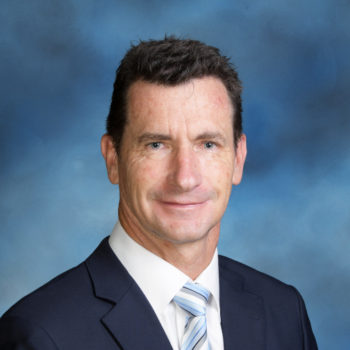Message from the Principal
The Neuroscience of Learning
On Saturday, all KGV teachers and educational assistants attended a five hour professional learning session by educational neuroscientist, Dr Jared Cooney-Horvath. The feedback from staff regarding the CPD was positive, and aligned to our school improvement agenda which is centred on getting better and better at:
- Our students know what they are learning and why;
- Our students know how they are progressing and get the feedback they need to improve;
- Our students receive the timely support and extension they need.
Below are some on my key ‘takeaways’ and personal reflections for the professional learning event. I have also attempted to relate how some of these reflections relate to our improvement goals above.
Errors
We must see errors as opportunities for growth. Errors are powerful because they challenge what we perceive to be ‘correct’ about the world, and invite us as learners to engage and relearn or, as non-learners, avoid or ignore the error and opt-out.
This topic was especially useful in relation to goal 2 above. Error and feedback must be framed positively, and students must see error as an opportunity to extend learning. As teachers, it is important that we continue to focus on how we frame achievement and grades as feedback and an opportunity for growth.
Form follows function
When it comes to designing learning episodes, having clarity around learning objectives is paramount. According to Jared, to maximise learning, all learners need to know:
What am I trying to achieve?
What do I need to do?
What does it look like?
This directly relates to Question number 1 above, and our ongoing focus on refining our Guaranteed and Viable Curriculum (GVC). Essentially, a guaranteed and viable curriculum is one that can be taught in the time available and is being taught in every classroom. Our teacher teams are working hard to provide even greater clarity for students about what is essential to learn in each scheme of work and what they are aiming for in the end product or assessment.
Making learning visible
Learning objectives are best described as active verbs, so the learning can become visible. Learning takes place inside the brain and is thus ‘invisible’, we therefore need to encourage students to demonstrate their learning through a behavioural outcome (we see learning when students do or demonstrate something different). Verbs like understand, consider, etc., are difficult to evidence as a learning objective when compared to active verbs like summarise, calculate, contrast or describe which can be more easily demonstrated by the learner.
This directly relates to question 2 above, and how it is easier for our students and teachers to ‘know’ how learning is progressing if we make this learning visible. Our staff will be collaborating about how we can frame our learning objectives as active verbs as a powerful way to make learning more visible.
Facts must precede skill
For learning to be maximised, facts always precede skill. Facts are essential for our learners to move through the learning process from surface, to deep, to transfer.
Making sure that our students have the prerequisite facts and vocabulary is essential before we move to learning experiences designed to foster deep and transfer learning.
The right type of feedback is powerful
Jared described four types/levels of feedback
- Self-Feedback (about you, for motivation, e.g. good effort);
- Task-Feedback (specific performance, e.g. how well the task has been performed):
- Process-Feedback (error feedback plus the steps you need to fix it);
- Self-regulation-Feedback (you find the issues and you fix it, e.g. what do you think is missing? What do you think you need to do next?).
Feedback is most powerful when it is framed within these 3 questions – Where am I going? How am I going? Where to next?
This relates directly to question 2 above how we might use these feedback questions as a frame to deepen our collective understanding and improve the consistency of feedback our students receive. We think that the three simple questions (Where am I going? How am I going? Where to next?) are a great way to frame feedback that enables our students to take the next step in learning.
Would you like to talk more about learning?
This Saturday from 9.30 to 11.30 we are holding our first ROAR session for the year. The session provides a great opportunity to talk about learning and to hear your feedback and ideas about our school and the work that we are doing.
This Saturday we are discussing our new Response to Intervention framework (RTI). RTI is a multi-tier approach to the early identification and support of students who need support or extension to ensure learning progress. The RTI process begins with high quality teaching in every classroom with a focus on formative assessment and knowing where every student is at with their learning. Students who are still not making progress then receive additional support programs and time to ensure they achieve at high levels.
There are still some spaces left. To register, please click on this link(https://forms.gle/Q2hDQzxjLEbxg48D6)
Kind regards

Mark Blackshaw
Principal
King George V




